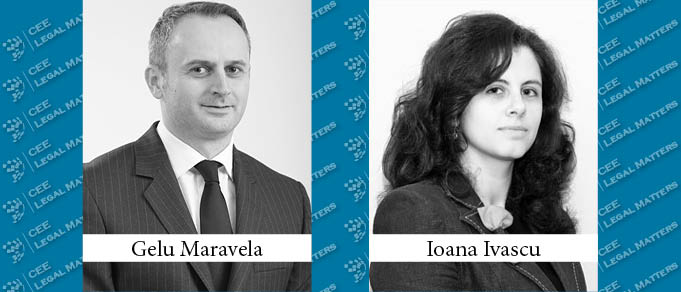Recently, Law no. 146/2021 regarding electronic surveillance within judicial and executional criminal proceedings (“Law no. 146/2021”) was published in the Official Gazette of Romania, for the first time regulating the use of electronic monitoring devices in Romania.
As a result, the Informatic System for Electronic Surveillance (“ISES”) will be initiated and run a pilot program between March 1, 2022, and December 31, 2025. The purpose of the pilot program is to organize and make ISES operational from a technical point of view, as well as ensure the training of relevant personnel and the proper funding for the project.
Once ISES becomes operational, electronic monitoring devices will begin being used for the control and enforcement of freedom restricting sanctions such as house arrest, limited mobility under judicial supervision and protection orders.
In order to facilitate the implementation of the new regulation, updates have been made to the Criminal Code and Criminal Procedure Code, as well as to the laws concerning the serving of criminal sentences, as well as Law no. 217/2003 for the prevention and control of domestic violence in order to reflect the possibility of using electronic monitoring devices.
The electronic surveillance system
The implementation of Law no. 146/2021 provides the use of mobile or fixed electronic monitoring equipment, meant to:
- determine the location of the monitored person, be it a suspect or a felon convicted to house arrest, limited mobility or under judicial control;
- identify and prevent the approach of a protected person (the beneficiary of a protection order or a European protection order issued by the Romanian State) by a monitored person who must keep a certain distance from either the protected person and / or their home.
The electronic monitoring devices will be installed by competent police officers working together with the Romanian Special Telecommunication Services, and the wearer will receive clear instructions regarding how to maintain the device functional.
It is expressly stated within Law no. 146/2021 that the monitored person is prohibited from letting the device run out of battery, damaging it, or tampering with it in any way that would prohibit the proper functioning of the same.
Once the electronic monitoring device is in place, the monitored person is obliged not to leave their home, or the relevant perimeter set forth by the judge when instating the measure of electronic surveillance.
As a result, no movement outside the designated areas is allowed without a prior approval from the monitoring authority (in this case, the relevant police officers). In case movement outside the set perimeter is deemed necessary, the authorities may establish a clear route meant to be followed by the monitored person.
Means of enforcing electronic surveillance
Should the order of the court and / or the prosecutor not be followed, the electronic device will send an alert to the authorities as follows:
- in case the monitored person leaves their house or the designated perimeter;
- in case of proximity between the electronic device of the monitored person and the electronic device of the protected person which breaches the maximum distance set forth in the relevant protection order;
- an error alert should the monitoring device lose signal or suffer any malfunction.
Such alerts will be automatically transmitted to the emergency dispatch center together with the tracking data available for the monitoring devices involved in the alert.
Law no. 146/2021 also instates a priority order in case of multiple alerts from the same or multiple devices as follows:
- proximity alerts which indicate the potential breach of a protection order will have priority over all others; in this case the monitored person must contact the relevant authorities by telephone and follow their instructions, present themselves at the nearest police station, and step away from the protected person; in addition, in case of a proximity alert, the authorities must urgently contact the protected person at once, inform them of the breach as well as regarding to the current whereabouts of the monitored person;
- after proximity alerts, error alerts will be investigated in order to ensure the proper functioning of all monitoring devices; in this case, the monitored person must remain in or return to the perimeter, contact the relevant authorities by telephone and follow their instructions, present themselves at the nearest police station, and / or step away from the protected person, as the case may be;
- perimeter breach alerts; leaving house arrest will take precedent before overstepping the boundaries of a larger perimeter; in this case as well, the monitored person must contact the relevant authorities by telephone and follow their instructions, then present themselves at the nearest police station.
The refusal of the monitored person to abide by the directions set forth by the authorities, as presented above, as well as any conduct from their part which affects the integrity of the monitoring device or the possibility of the authorities to verify the compliance with the measures instated by the court is considered a breach of legal obligations.
However, Law no. 146/2021 does not provide clear sanctions for such a breach. In this respect, Law no. 146/2021 brought clear amendments to the Criminal Code to incriminate the destruction of electronic monitoring device as well as not complying with house arrest or other mobility restrictive measures.
Should any of the alerts be triggered, the authorities must verify at once the circumstances of the breach, the duty falling with the closest police station to the location of either the protected person in case of proximity alerts, or the monitored person in other cases. The data regarding the breach will be sent automatically by the emergency dispatch to the closest police station.
The authorities must also immediately contact the monitored person and instruct them how to proceed going forward.
Aspects regarding data protection
In accordance with Law no. 146/2021, all personal data must be processed with full compliance with the provisions of Law no. 363/2018 regarding the protection of personal data by competent authorities with the purpose of preventing, discovering, investigating, prosecuting and fighting crime or enforcing punitive, educational and safety measures.
In this respect, the authorities which collect the personal data of the monitored and protected persons, as well as the relevant information regarding the location of the same, are deemed processors under the General Data Protection Regulation.
As such, the obtained data may only be used for the purpose for which it was collected, unless there are sufficient guarantees that the rights of the data subject are fully protected. Other authorities may use the information collected by the ISES in case of threat to national security, as defined by the specific legal provisions.
In order to ensure the protection of personal data, Law no. 146/2021 provides that all tracking and signaling data is to be automatically deleted after two years as of the date the electronic surveillance ceased, unless the same is being used before the courts.
Impact
The implementation of ISES will have a powerful positive impact on the manner in which authorities may control the compliance with provisions regarding house arrest, restrictions to free movement, and especially breaches of protection orders.
At this time, authorities conduct surprise visits and must rely on the good faith of the monitored person to abide by the provisions of the court as well as the instructions received from the police regarding the imposed restrictions. However, without a real-time means to verify the location of the individuals, breaches regarding movement interdictions often remained unnoticed and unpunished.
This aspect is problematic particularly in the case of protection orders where the breach of the same often has fatal consequences.
The implementation of electronic surveillance directly linked to the emergency dispatch system will serve to prevent such consequences and ensure that movement restrictive measures are fully respected.
It is also safe to assume that the proximity control through fast electronic means will increase the trust of the population in protection order which, in turn, may result in a rise in the request and implementation of the same a subsequent decrease in cases of recurring domestic violence.
By Gelu Maravela, Founding Partner, and Ioana Ivascu, Senior Associate, MPR Partners




